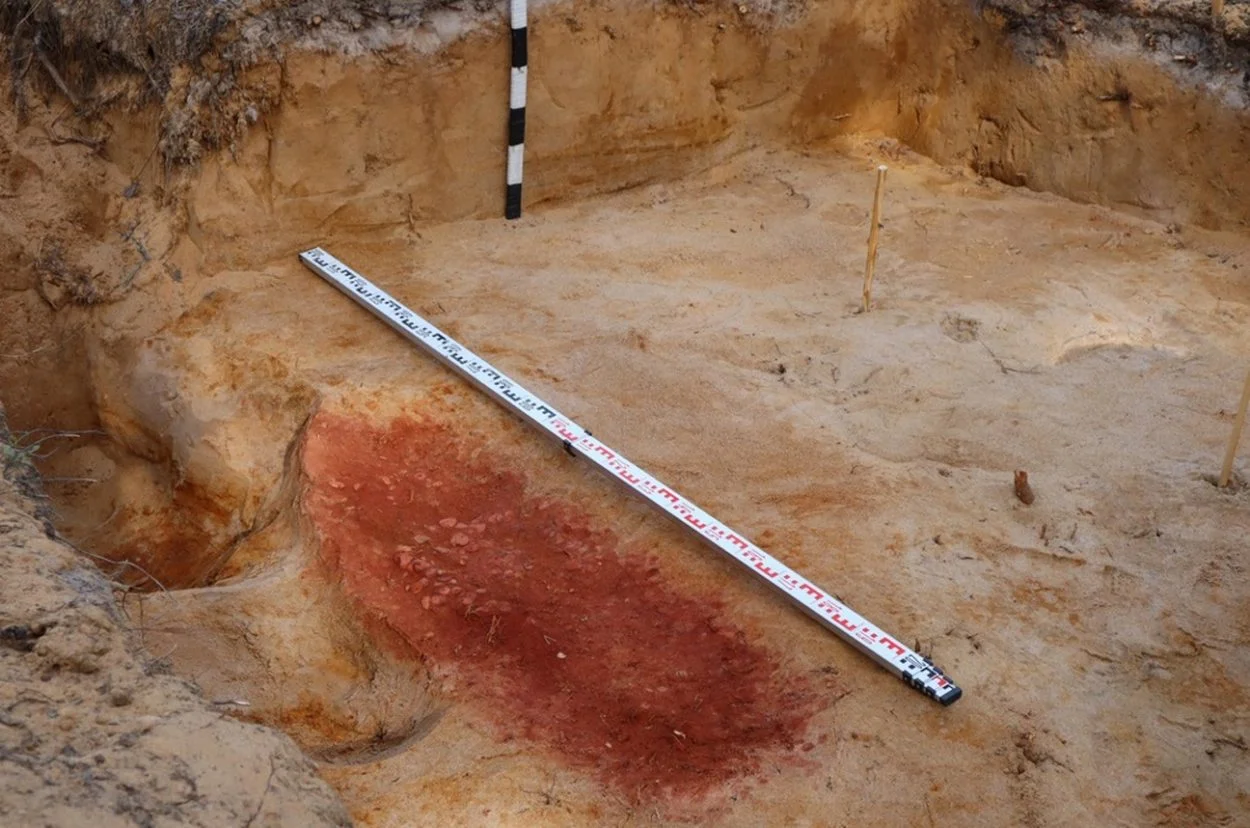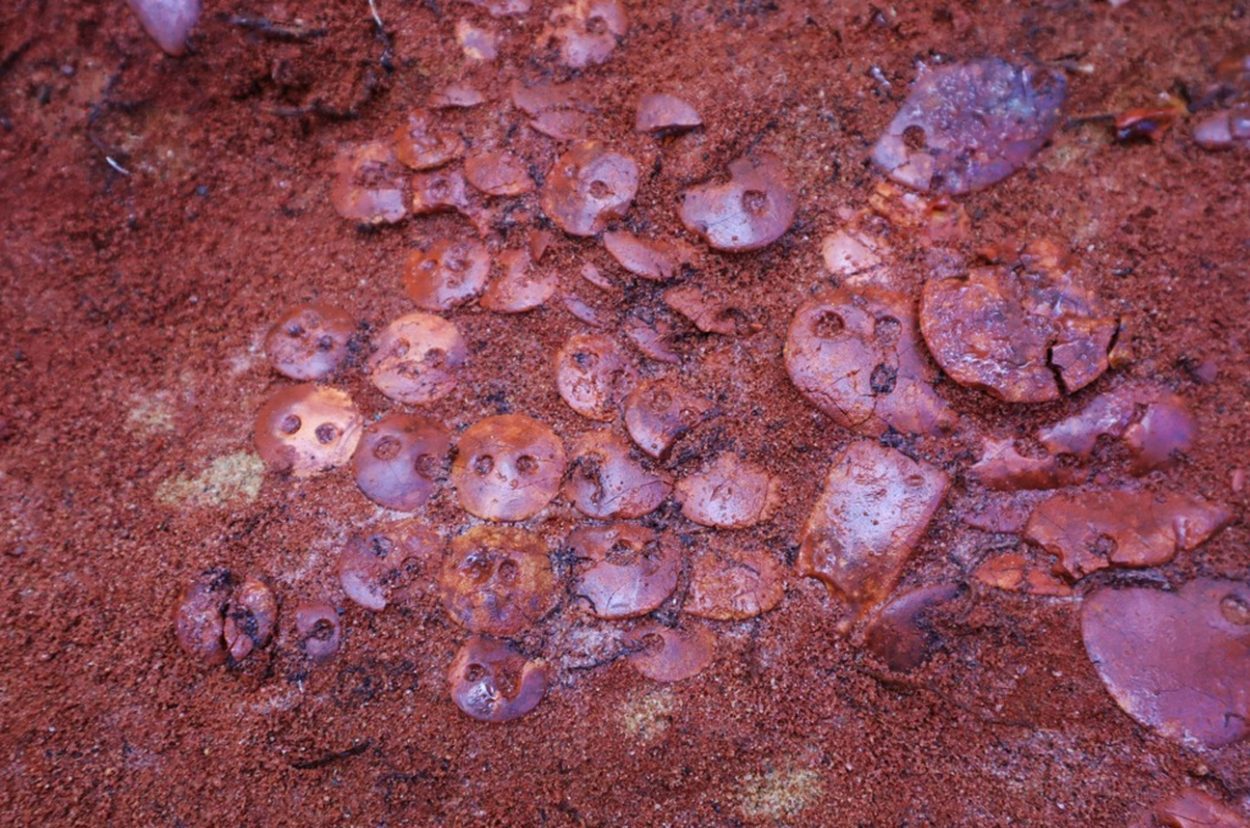Archaeologists from the Petrozavodsk State University has discovered a “unique” burial whilst exploring ancient settlements on the western shore of Lake Onega, in the territory of the Republic of Karelia, Russia.
The researchers unearthed the burial of a high-status individual in a narrow oval pit lined with red ochre.
When clearing the grave, they discovered 140 pieces of amber jewellery (examples of which have previously only been found in the Eastern Baltic), consisting of buttons, pendants, and various flint items.
The amber buttons were arranged face down in rows, and were sewn into a leather cover placed over the deceased, whilst along the edges of the pit were deposited amber decorations that formed two tiers.

By comparing the analogy with amber decorations from sites located in the Eastern Baltic, archaeologists have proposed that the burial dates from around 3400 BC during the Chalcolithic or Copper Age (a transition between the Neolithic and the Bronze Age).
During this period, the mining of metal and stone was particularly developed in some areas, along with the processing of those materials into valuable goods.
The Baltic region is home to the largest known deposit of amber, called Baltic amber or succinite. It dates from 44 million years ago (during the Eocene epoch) and was appreciated for its colour, natural beauty, and ability to shape into complex shapes through polishing.

Workshops for the production of axes and adzes are currently being investigated by the university expedition, discovered just adjacent to the burial site.
The researchers theorise that the deceased may have been a trader from the Eastern Baltic States, who arrived on the western shore of Lake Onega to acquire axes in exchange for amber. This could suggest ancient trading links between the people living in Karelia, with the tribes that lived on the southern coast of the Baltic Sea.
Ministry of Science and Higher Education of the Russian Federation
Header Image Credit : Ministry of Science and Higher Education of the Russian Federation





